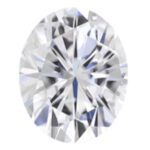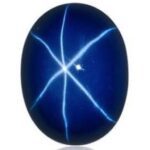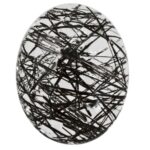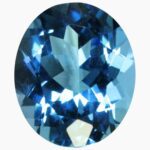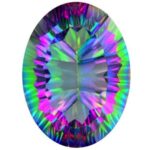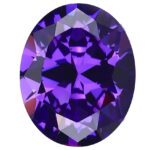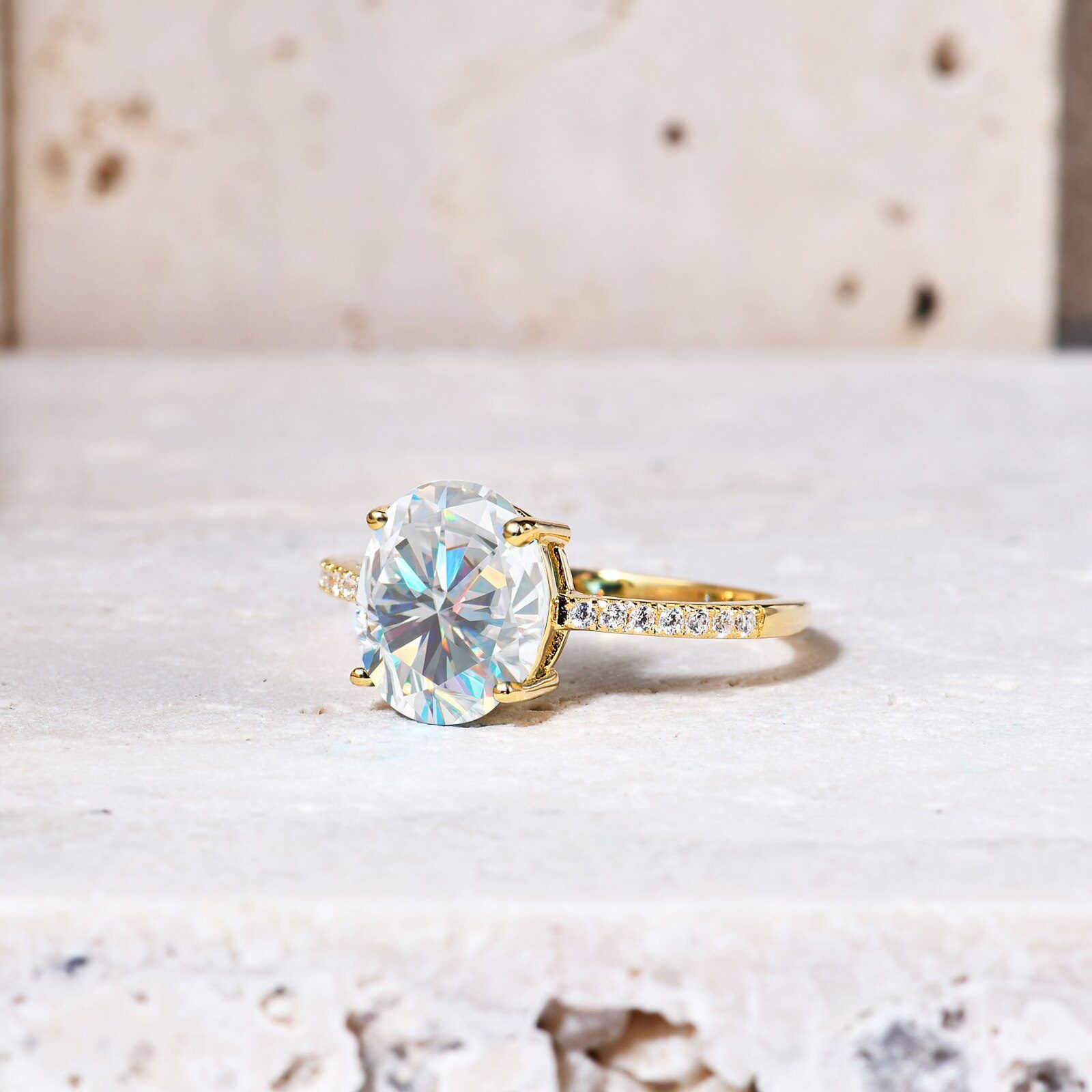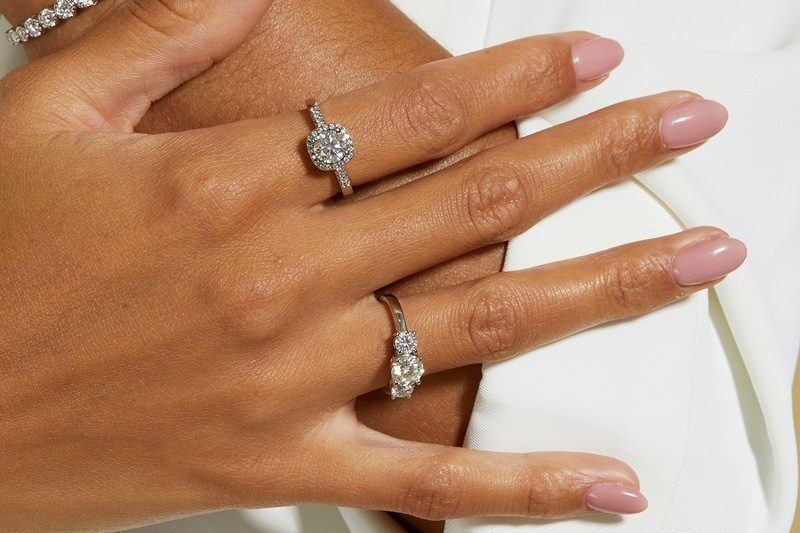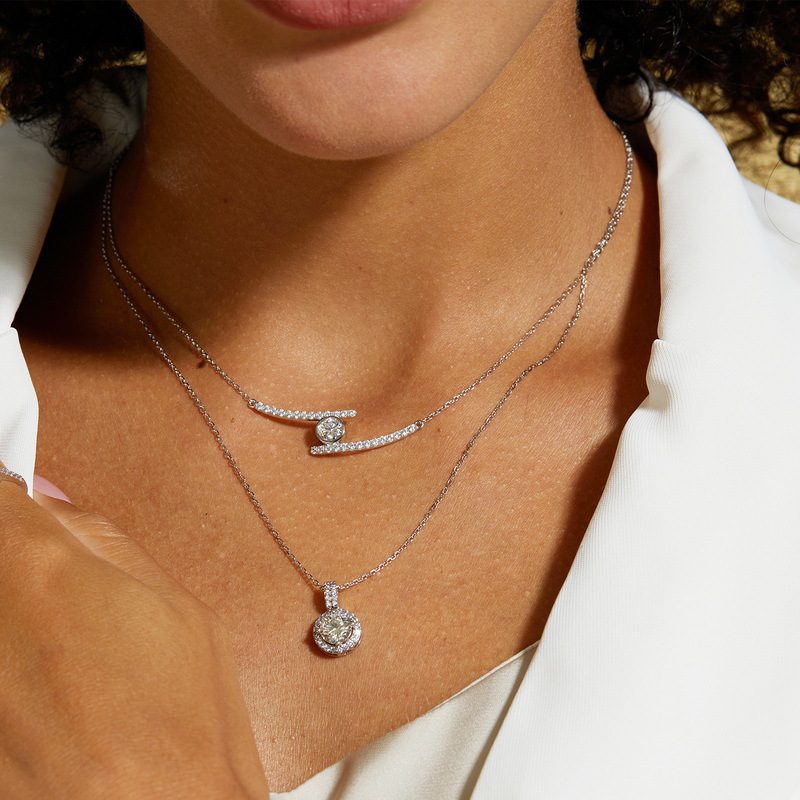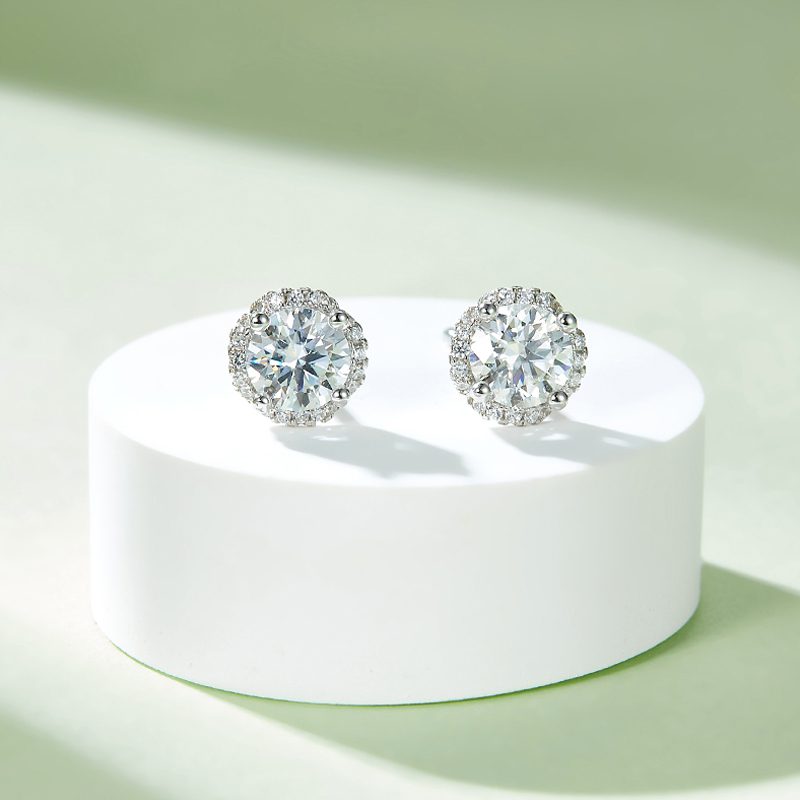

Gemstone & Crystal Rings
Wearing gemstones and crystal rings daily infuses everyday life with their unique energies, promoting emotional balance and positivity. When used for engagement, they symbolize the enduring qualities sought in love, offering both style and meaningful connection in a compact, elegant form.
Shop By Gemstones
"Gemstone Ring made for Everyday Wear "


Moissanite


Star Sapphire


Moonstone


Moss Agate


Moss Agate


Amethyst
Trending Moss Agate Ring
Most Loved Collection
"Gemstone Ring made for Everyday Wear "
" Better Choice Than Diamond "
The Advantages of Wearing Gemstone and Crystal Rings


Wearing a gemstone or crystal ring can bring about various benefits, encompassing both physical and metaphysical aspects, contingent upon the specific stone and individual beliefs. Here are some of the common advantages:
Emotional Equilibrium: Many gemstones and crystals are linked to emotional healing and balance. They have the potential to alleviate stress and anxiety, fostering a sense of tranquility and well-being.
Protection: Certain stones are thought to provide protection against negative energies, psychic intrusions, or environmental stressors.
Physical Well-being: In alternative medicine, gemstones are believed to possess healing properties. For instance, amethyst is said to be effective for alleviating headaches, while rose quartz is associated with heart health.
Chakra Alignment: Crystals are frequently used to align and balance the body’s chakras, which are believed to serve as energy centers for vitality.
Aesthetic Appeal: In addition to their metaphysical properties, gemstone and crystal rings are aesthetically pleasing and can be worn as stylish accessories.
Crystal Rings FAQs
Crystal rings are often worn on different fingers depending on personal preferences and the specific meanings or properties associated with the crystal. Here are some common choices:
Ring Finger: Traditionally, crystal rings are worn on the ring finger of the left hand. This finger is associated with love and commitment, making it a popular choice for engagement or promise rings.
Index Finger: Wearing a crystal ring on the index finger can symbolize power and authority. It’s a statement finger that draws attention to the crystal’s properties or symbolism.
Middle Finger: The middle finger is often seen as a neutral or balanced choice. Crystal rings worn on this finger can represent self-expression and individuality.
Thumb: Some people choose to wear crystal rings on their thumb for a unique and eye-catching look. It can symbolize personal willpower and intention.
Ultimately, the finger you choose to wear your crystal ring on is a matter of personal preference and the significance you attach to the crystal’s energy or meaning. It’s important to choose the finger that feels most meaningful to you.
Crystal rings can hold various meanings and significance depending on the type of crystal used and personal beliefs. Here are some common meanings associated with crystal rings:
Energy and Healing: Many people wear crystal rings for their believed healing properties. Different crystals are thought to have unique energies and can help balance emotions, improve well-being, and provide a sense of calm or clarity.
Spiritual Connection: Crystal rings are often seen as a way to connect with the spiritual realm or higher consciousness. Some individuals use them during meditation or as tools for enhancing spiritual practices.
Protection: Certain crystals, such as black tourmaline or obsidian, are worn for their protective qualities. They are believed to shield the wearer from negative energies or psychic attacks.
Personal Growth: Crystal rings can symbolize personal growth and transformation. Wearing a crystal with specific intentions in mind can serve as a reminder of goals and aspirations.
Astrological Significance: Some people choose crystals based on their astrological signs. Certain crystals are associated with zodiac signs and are believed to enhance the strengths and mitigate the weaknesses of those signs.
Fashion and Style: Crystal rings are also worn as fashionable accessories. They can add a unique and aesthetic touch to one’s outfit, expressing individual style and taste.
The specific meaning of a crystal ring may vary depending on the crystal’s type and the intentions of the wearer. It’s essential to research the properties of the crystal you choose and consider your personal beliefs and goals when wearing one.
Healing crystal jewelry consists of accessories like necklaces and bracelets adorned with crystals or gemstones known for their believed metaphysical properties. People wear them with intentions of promoting well-being and balance. These crystals are chosen based on specific energies, and they’re thought to interact with a person’s energy field or chakras.
While their effectiveness varies from person to person, some use them for meditation and mindfulness, while others appreciate them for their beauty and style.
Crystals are popular in jewelry for several reasons:
Aesthetic Appeal: Crystals and gemstones come in a wide range of colors and cuts, making them visually stunning and appealing in jewelry designs. They add sparkle and elegance to any piece.
Symbolism: Different crystals are associated with various meanings and symbolism, allowing wearers to convey personal messages or intentions through their jewelry choices. For example, amethyst may symbolize calmness and clarity, while rose quartz represents love and compassion.
Metaphysical Beliefs: Many people believe in the metaphysical properties of crystals, attributing healing and positive energy aspects to them. Wearing crystal jewelry is thought to bring these benefits into one’s life.
Spiritual Significance: Crystals have been used in spiritual practices and rituals for centuries. They are believed to enhance meditation, promote spiritual growth, and protect against negative energies.
Customization: Jewelry can be customized to include specific crystals that resonate with an individual’s energy or intentions, adding a personal touch to their accessories.
Historical and Cultural Significance: Throughout history, various cultures have valued and adorned themselves with crystals for their cultural or historical significance. This tradition continues to influence modern jewelry trends.
Fashion and Trends: Crystals are versatile and can be incorporated into a wide range of jewelry styles, from classic to contemporary. They often align with fashion trends and allow individuals to express their unique style.
Gifts and Sentiment: Crystal jewelry is a popular choice for gifts due to its beauty and the ability to convey thoughtfulness and sentiment.
Overall, the popularity of crystals in jewelry is a combination of their visual appeal, deep symbolism, perceived metaphysical properties, and cultural significance, making them a timeless and versatile choice for personal adornment.
Whether or not you should wear crystal jewelry is a personal choice. Here are some factors to consider when deciding:
Belief in Crystal Properties: If you believe in the metaphysical or healing properties of crystals and feel a connection to their energies, you may choose to wear crystal jewelry to harness those benefits.
Intentions and Goals: Consider your intentions for wearing crystal jewelry. Are you seeking emotional balance, protection, or a sense of well-being? Select crystals that align with your specific goals.
Personal Style: Crystal jewelry can be a fashionable accessory that complements your style. If you appreciate the aesthetics and beauty of crystal jewelry, it can be a valuable addition to your wardrobe.
Cultural or Spiritual Significance: Some cultures and spiritual practices incorporate crystal jewelry into rituals and traditions. If this aligns with your beliefs or background, wearing such jewelry may have deeper significance.
Meditation and Mindfulness: If you practice meditation or mindfulness, crystal jewelry can be a tool to enhance your focus and spiritual connection during these practices.
Allergies or Sensitivities: Ensure that you’re not allergic or sensitive to the metal used in the jewelry, as well as the crystal itself, to avoid any skin reactions.
Personal Comfort: Jewelry should be comfortable to wear. Consider the weight, size, and fit of the crystal jewelry to ensure it feels comfortable on your body.
Crystals are believed by some to have the potential to alleviate anxiety, but their effectiveness is subjective and not scientifically proven. Here’s how some people use crystals for anxiety:
Calming Energy: Certain crystals, such as amethyst and lepidolite, are thought to emit calming energies that may help reduce feelings of anxiety and stress when kept close by.
Grounding and Centering: Crystals like black tourmaline and hematite are believed to provide a sense of grounding and stability, which can be beneficial for individuals experiencing anxiety.
Meditation and Mindfulness: Many people incorporate crystals into their meditation or mindfulness practices to enhance relaxation and promote a sense of tranquility.
Intentions and Affirmations: Some individuals use crystals as a focal point for setting intentions and affirmations related to anxiety reduction, reinforcing a positive mindset.
It’s important to note that while some people report positive experiences using crystals for anxiety, these effects are largely based on personal belief and the placebo effect. Crystals should not be considered a replacement for professional medical or therapeutic treatment for anxiety disorders. If you are dealing with severe or chronic anxiety, it’s essential to consult with a mental health professional who can provide evidence-based treatments and support.
Yes, crystals can be used as an engagement ring, but there are some important considerations to keep in mind:
Durability: Crystals are generally not as hard or durable as traditional engagement ring gemstones like diamonds or sapphires. They are more prone to scratching and chipping, so they may not withstand daily wear and tear as well.
Setting: The choice of setting is crucial when using a crystal for an engagement ring. A protective and secure setting can help minimize the risk of damage to the crystal. Be sure to work with a skilled jeweler who can create a setting that both showcases the crystal’s beauty and offers protection.
Personal Preferences: It’s essential to consider the preferences of the person who will be wearing the engagement ring. Some individuals may appreciate the unique and metaphysical aspects of a crystal engagement ring, while others may prefer a more traditional and durable gemstone.
Crystal Type: Different crystals have varying levels of hardness and durability. For example, a crystal like quartz is relatively harder than others and may be a better choice for an engagement ring.
Symbolism: Many people choose crystals for engagement rings because of their symbolic meanings or personal significance. Crystals can represent qualities like love, healing, and spirituality, which can hold deep meaning for the couple.
Maintenance: Crystals may require more careful maintenance than traditional gemstones. Regular cleaning and protection from harsh chemicals are important to keep them looking their best.
Ultimately, using a crystal as an engagement ring can be a beautiful and meaningful choice for couples who appreciate the uniqueness and symbolism of crystals. However, it’s crucial to be aware of the potential durability issues and take steps to ensure the crystal remains protected and well-maintained over time. Consulting with a reputable jeweler who specializes in working with crystals can help you create a stunning and lasting engagement ring.
The crystal that is closest to a diamond in terms of hardness and brilliance is moissanite. Moissanite is a naturally occurring mineral, but it is rarely found in nature. Most moissanite used in jewelry is created in a laboratory setting, making it a popular and ethical alternative to diamonds.
Here’s how moissanite compares to diamonds:
Hardness: Both diamonds and moissanite are incredibly hard, ranking at the top of the Mohs scale of mineral hardness. Diamonds have a Mohs hardness of 10, while moissanite is slightly lower but still very hard at 9.25. This means that moissanite is highly resistant to scratching and can withstand daily wear.
Brilliance: Moissanite has a high refractive index, which means it exhibits exceptional brilliance and sparkle, similar to that of a diamond. It disperses light well, creating a beautiful play of colors known as “fire.”
Color: Like diamonds, moissanite comes in various color grades. The highest-quality moissanite is nearly colorless and comparable to a top-grade diamond on the color scale.
Cost: Moissanite is typically more affordable than diamonds of similar size and quality. This makes it an attractive option for those seeking a diamond-like appearance without the high cost.
Ethical Considerations: Lab-created moissanite is considered a more ethical choice as it doesn’t involve the environmental and ethical concerns associated with some diamond mining practices.
Overall, moissanite is a popular choice for engagement rings and other fine jewelry when individuals desire a gemstone that closely resembles a diamond in terms of hardness, brilliance, and appearance while offering some advantages in terms of cost and ethical sourcing.
Caring for a crystal ring is essential to maintain its beauty and energy over time. Here are some tips on how to care for your crystal ring:
Avoid Harsh Chemicals: Crystals can be sensitive to chemicals found in household cleaners, perfumes, and cosmetics. Remove your crystal ring before using these products to prevent damage or discoloration.
Regular Cleaning: Clean your crystal ring regularly to remove dirt, oils, and residue that can dull its shine. Use a soft, damp cloth or a mild soap solution and gently wipe the surface of the crystal. Avoid using abrasive materials or harsh chemicals.
Storage: When you’re not wearing your crystal ring, store it in a safe and dry place. Consider keeping it in a soft pouch or a jewelry box with compartments to prevent scratching or damage from other jewelry pieces.
Avoid Extreme Temperatures: Extreme heat or cold can affect the integrity of some crystals. Avoid exposing your crystal ring to extreme temperature changes, such as leaving it in direct sunlight or extreme cold.
Recharging and Cleansing: Crystals can absorb energy, so it’s a good practice to cleanse and recharge them periodically. You can use methods like sunlight, moonlight, or selenite charging plates to do this, as mentioned earlier in this conversation.
Check the Setting: If your crystal ring has a setting, periodically check the prongs or bezel to ensure the crystal is secure. Loose settings can lead to the crystal falling out and getting damaged or lost.
Respect the Crystal’s Properties: Different crystals have different properties and sensitivities. Be mindful of the specific care recommendations for the type of crystal used in your ring.
Wear with Care: While some crystals are durable, they may still be sensitive to impact or pressure. Be cautious when wearing your crystal ring to avoid knocking it against hard surfaces.
Regular Inspections: Periodically inspect your crystal ring for any signs of damage or wear. If you notice any issues, such as loose stones or scratches, consider taking it to a jeweler for maintenance or repair.
By following these care guidelines, you can help ensure that your crystal ring remains beautiful and energetically vibrant over time, allowing you to continue enjoying its benefits and aesthetic appeal.
Gemstone Rings FAQs
Yes, a gemstone ring can absolutely be used as an engagement ring. In fact, gemstone engagement rings have become increasingly popular for several reasons:
Variety and Personalization: Gemstones come in a wide range of colors and varieties, allowing couples to choose a gemstone that reflects their personal preferences and style. This offers a unique and personalized touch to the engagement ring.
Symbolism: Different gemstones are associated with various meanings and qualities. For example, sapphires are often associated with wisdom and loyalty, while emeralds represent love and renewal. Couples may choose a gemstone with significance to them.
Cost-Effectiveness: Gemstones, especially colored gemstones, can be more affordable than diamonds of similar size and quality. This can be advantageous for couples looking for a stunning ring within a specific budget.
Ethical Considerations: Some individuals opt for gemstones due to ethical concerns related to diamond mining practices. Many gemstones are sourced more ethically, making them a socially responsible choice.
Uniqueness: Gemstone engagement rings are distinct and less common than traditional diamond rings. They stand out and can become a conversation piece.
Durability: Some gemstones, such as sapphires and rubies, are quite durable and suitable for everyday wear, making them a practical choice for an engagement ring.
When choosing a gemstone engagement ring, it’s essential to consider the durability of the gemstone, the quality of the setting, and the recipient’s personal style and preferences. Proper care and maintenance will also help ensure the longevity and beauty of the ring. Ultimately, the choice of a gemstone engagement ring can be a meaningful and unique way to celebrate a couple’s commitment and love.
Caring for a gemstone ring is crucial to maintain its beauty and longevity. Gemstones, while durable, can still be sensitive to certain factors. Here’s how to care for your gemstone ring:
Regular Cleaning: Clean your gemstone ring regularly to remove dirt, oils, and debris that can dull its shine. Use a soft, lint-free cloth or a mild soap solution and gently wipe the surface of the gemstone. Avoid using abrasive materials or harsh chemicals.
Avoid Harsh Chemicals: Some gemstones can be sensitive to chemicals found in household cleaners, perfumes, and cosmetics. Remove your ring before using these products to prevent damage or discoloration.
Storage: When you’re not wearing your gemstone ring, store it in a safe and dry place. Consider keeping it in a soft pouch or a jewelry box with compartments to prevent scratching or damage from other jewelry pieces.
Avoid Extreme Temperatures: Extreme heat or cold can affect the integrity of some gemstones. Avoid exposing your ring to extreme temperature changes, such as leaving it in direct sunlight or extreme cold.
Protect from Scratches: Gemstones can vary in hardness, so it’s essential to be mindful of their susceptibility to scratching. Avoid wearing your gemstone ring during activities that may subject it to potential damage, such as heavy labor or sports.
Gemstone Specific Care: Different gemstones have unique care requirements due to variations in hardness and sensitivity. Research the specific care recommendations for the type of gemstone used in your ring.
Regular Inspections: Periodically inspect your gemstone ring for any signs of damage or wear. If you notice any issues, such as loose stones or scratches, consider taking it to a jeweler for maintenance or repair.
Reputable Jewelers: When considering maintenance or repair work, choose a reputable jeweler who specializes in working with gemstone jewelry to ensure proper care and preservation.
Professional Cleaning: It’s a good idea to have your gemstone ring professionally cleaned and inspected by a jeweler at least once a year. They can check for any potential issues and give your ring a thorough cleaning.
By following these care guidelines, you can help ensure that your gemstone ring remains beautiful and well-maintained over time, allowing you to enjoy its vibrant colors and elegance for years to come.
The durability of a gemstone ring can vary widely depending on the type of gemstone used and its hardness. Gemstones are classified on the Mohs scale of mineral hardness, which ranks minerals from 1 (softest) to 10 (hardest). Here’s a general overview of gemstone durability based on their hardness:
Soft Gemstones (Mohs 1-4): Gemstones with low hardness, such as talc, gypsum, and fluorite, are more susceptible to scratching, chipping, and abrasion. Rings featuring these gemstones may not be suitable for everyday wear, especially if the gem is exposed to harsh conditions.
Moderate Hardness (Mohs 5-7): Gemstones like amethyst, garnet, and sapphire fall into this category. They are relatively durable and can withstand everyday wear, but they may still be vulnerable to scratches if subjected to rough treatment.
Hard Gemstones (Mohs 8-10): Highly durable gemstones like diamonds, rubies, and sapphires are well-suited for engagement and wedding rings because they can withstand the rigors of daily use and are less likely to scratch or chip.
It’s important to note that even gemstones with high hardness can still be damaged under certain circumstances. Factors that can affect the durability of a gemstone ring include:
Wear and Tear: Over time, even the hardest gemstones can show signs of wear, especially if worn every day. Regular maintenance and cleaning can help preserve their appearance.
Settings: The type of setting used for the gemstone can influence its vulnerability to damage. Prong settings, for example, can leave the gemstone more exposed to potential impacts than bezel settings.
Activities: Activities that involve impact or exposure to chemicals (e.g., sports, gardening, or cleaning with harsh chemicals) can pose a risk to gemstones, regardless of their hardness.
Care and Maintenance: Proper care and maintenance, as mentioned in the previous response, are essential to prolong the life and appearance of a gemstone ring.
Ultimately, the choice of gemstone for a ring should take into consideration the wearer’s lifestyle and how the ring will be worn. It’s also important to consult with a reputable jeweler who can provide guidance on gemstone durability and suitable settings for long-term wear.
A gemstone is a naturally occurring mineral or organic material that is cut and polished to be used in jewelry or other decorative items due to its beauty, rarity, and often, its perceived value. Gemstones come in various colors and types, including diamonds, sapphires, emeralds, rubies, and many others.
The rarest gemstone is generally considered to be the red diamond, specifically the “Moussaieff Red Diamond” or the “Hancock Red Diamond.” These diamonds are extremely rare and valuable due to their deep red color, with very few known examples in the world.
Gemstones are cut through a process known as lapidary. Here’s a brief overview of how it’s done:
Planning: The cutter plans the shape and style of the gemstone based on its characteristics, such as color, clarity, and inclusions.
Sawing: If the gemstone is too large, it may be initially cut into smaller, more manageable pieces using a saw.
Shaping: The gem is then shaped using a grinding wheel or saw, creating the basic outline of the desired shape.
Faceting: This is where the intricate facets or flat surfaces are cut onto the gemstone. A faceting machine with grinding and polishing laps is used to achieve the desired angles and finish.
Polishing: The gemstone is polished to a high shine, often using a series of finer and finer abrasives until the desired luster is achieved.
Final Inspection: The finished gemstone is carefully inspected for any imperfections and cleaned before it is ready for use in jewelry or other decorative items.
This process requires skill and precision to bring out the gemstone’s inherent beauty and value.
To determine if a gemstone is real, you can consider the following methods:
Consult a Professional: Seek the expertise of a certified gemologist or jeweler. They can use specialized equipment and techniques to authenticate the gemstone.
Visual Inspection: Examine the gemstone closely for imperfections or inclusions, as natural gemstones often have these characteristics. Synthetic or imitation stones may appear too perfect.
Hardness Test: Use a hardness test to check the gem’s resistance to scratching. For example, a diamond can scratch glass, but glass cannot scratch a diamond.
Refractive Index: Measure the gem’s refractive index, which is how much it bends light. Different gemstones have unique refractive indexes.
Specific Gravity: Compare the gemstone’s weight to its volume to calculate its specific gravity. Genuine gemstones have characteristic specific gravities.
Heat Test: Some gemstones may change color or crack under heat. Be cautious with this test, as it can damage valuable stones.
UV Light Test: Certain gemstones exhibit fluorescence under ultraviolet (UV) light. A lack of fluorescence doesn’t guarantee a gem is fake, but its presence can be a positive indicator.
Conduct a Scratch Test: Be cautious with this method as it can damage the gemstone. Only use it if you’re reasonably certain about the gem’s identity.
Use a Gem Testing Kit: These kits include various tools and solutions to help identify gemstones. They are often available for purchase online or from specialized stores.
Keep in mind that some high-quality synthetic gemstones, such as lab-grown diamonds, can be challenging to distinguish from natural ones, even for professionals. For a definitive answer, consult an expert or use a combination of testing methods.
You can clean a gemstone ring at home with these simple steps:
Gather Materials: You’ll need mild dish soap, warm water, a soft toothbrush, a bowl, a lint-free cloth, and a soft towel.
Prepare Soapy Solution: Fill the bowl with warm water and add a few drops of mild dish soap. Mix to create a soapy solution.
Soak the Ring: Place the gemstone ring in the soapy water and let it soak for about 10-20 minutes. This will help loosen dirt and oils.
Brush Gently: After soaking, use a soft toothbrush to gently scrub around the gemstone and along the setting to remove any remaining dirt. Be cautious not to scratch the gemstone or the metal.
Rinse Thoroughly: Rinse the ring under warm, running water to remove any soap residue. Ensure the drain is covered to prevent accidental loss.
Dry Carefully: Pat the ring dry with a soft towel or lint-free cloth. Ensure it is completely dry, especially around the gemstone and in the setting.
Final Inspection: Examine the ring to make sure it’s clean and sparkling. If necessary, repeat the process.
Avoid using harsh chemicals or abrasive materials, as they can damage both the gemstone and the metal setting. Regular cleaning will help maintain the beauty of your gemstone ring.
The gemstone most commonly associated with love is the ruby. Ruby is often referred to as the “gem of love” due to its vibrant red color, which symbolizes passion and romance. It is believed to enhance feelings of love and strengthen the emotional bond between couples. Rubies are often used in engagement rings and romantic jewelry to express love and affection.
The four C’s of gemstone grading are:
Carat Weight: Carat weight measures the size of the gemstone. One carat is equivalent to 200 milligrams. Larger gemstones are generally more valuable, assuming other factors like clarity, color, and cut are equal.
Clarity: Clarity assesses the presence of internal flaws (inclusions) and external blemishes in a gemstone. Gemstones with fewer imperfections receive higher clarity grades and are typically more valuable.
Color: Color evaluates the hue, saturation, and tone of the gemstone. The presence of vibrant and pure colors often increases a gemstone’s value. However, the importance of color can vary depending on the type of gemstone.
Cut: Cut refers to the craftsmanship and precision in shaping and faceting the gemstone. A well-cut gemstone maximizes its brilliance, sparkle, and overall visual appeal. A good cut can significantly enhance the gem’s value.
The gemstone that is well-known for changing color in different lighting conditions is the alexandrite. Alexandrite is a rare and highly prized variety of chrysoberyl that can appear green in natural daylight and shift to a purplish-red or reddish-purple under incandescent or candlelight. This unique color-changing property is known as “the alexandrite effect” and makes alexandrite one of the most sought-after and valuable gemstones.
Here are the traditional birthstones associated with each month:
- January: Garnet
- February: Amethyst
- March: Aquamarine (or Bloodstone)
- April: Diamond
- May: Emerald
- June: Pearl (or Alexandrite)
- July: Ruby
- August: Peridot
- September: Sapphire
- October: Opal (or Tourmaline)
- November: Topaz (or Citrine)
- December: Turquoise (or Zircon or Tanzanite)
These birthstones are often used in jewelry to represent the month of one’s birth or for their associated meanings and properties. Keep in mind that some months have multiple birthstone options, allowing for personal preference and variation in jewelry design.
Gemstone engagement rings are engagement rings that feature a colored gemstone as the center stone instead of a traditional diamond. These gemstones can be various colors and types, such as sapphires, rubies, emeralds, or other colorful gems. The choice of a gemstone for an engagement ring can hold specific meanings and symbolism:
Personalization: Gemstone engagement rings allow couples to choose a stone that holds personal significance, such as a birthstone or a favorite color. This customization adds a personal touch to the ring.
Symbolism of Color: Different gemstones have different symbolic meanings associated with their colors. For example, sapphires symbolize loyalty and commitment, rubies represent passion and love, and emeralds are associated with rebirth and fertility. Couples may choose a gemstone that resonates with their relationship.
Unique and Distinctive: Gemstone engagement rings are distinctive and unique, making them stand out from the traditional diamond rings. They are often chosen by couples who want to express their individuality and break away from convention.
Historical Significance: Many royal engagement rings throughout history have featured colored gemstones, contributing to the popularity of this choice. The most famous example is the sapphire engagement ring worn by Princess Diana and later given to Kate Middleton.
Ethical and Sustainable Options: Some couples opt for gemstone engagement rings due to ethical and environmental concerns surrounding the diamond industry. Lab-grown or ethically sourced gemstones provide a more sustainable alternative.
Overall, gemstone engagement rings offer a wide range of options, allowing couples to select a ring that reflects their unique relationship, style, and values. The choice of gemstone can carry deep personal significance and symbolism for the couple.
Moissanite is a gemstone that closely resembles a diamond in appearance. It has a high refractive index, which means it sparkles and exhibits brilliant flashes of light, similar to a diamond. Moissanite is often used as a diamond alternative in jewelry because of its diamond-like qualities, including its hardness and fire (dispersion).
While moissanite has some distinct differences, such as its optical properties and price point, it is a popular choice for those seeking the look of a diamond at a lower cost.
Yes, gemstone rings can be worn every day, but their suitability for daily wear depends on the type of gemstone, the setting, and your lifestyle. Here are some considerations:
Hardness: Some gemstones are more durable than others. Harder gemstones like sapphires and rubies can withstand daily wear better than softer ones. Diamonds are the most durable of all gemstones.
Setting: The type of setting and how securely the gemstone is held in place matters. Bezel settings or prong settings that protect the gemstone may be better for daily wear.
Lifestyle: Your daily activities can impact the wear and tear on a gemstone ring. If you have a physically demanding job or engage in activities that may expose the ring to rough conditions, consider a more durable gemstone and setting.
Maintenance: Regular maintenance, such as cleaning and checking the settings, can help keep a gemstone ring in good condition for everyday wear.
Protective Measures: Remove the ring when engaging in activities like gardening, cleaning, or exercising to minimize potential damage.
Ultimately, the choice of a gemstone ring for daily wear should take into account the gem’s hardness, the setting’s durability, your lifestyle, and your commitment to proper care and maintenance. If you have concerns about the ring’s durability, consult with a jeweler for guidance on selecting the right gemstone and setting for your needs.

